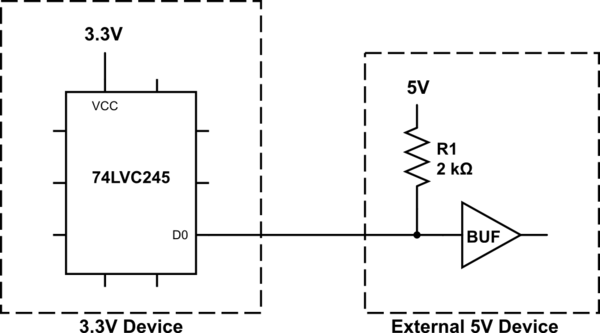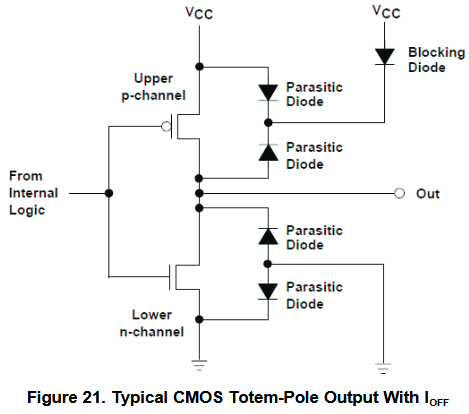I'm using a 74LVC245 buffer, which is a 3.3V chip with 5V tolerant inputs. What will happen if one of the chip's outputs is enabled and is connected to an external device with a 2K pull-up resistor to 5V? I welcome suggestions on other ways to do this, but I'm mainly interested in analysis of what happens with this specific setup.

simulate this circuit – Schematic created using CircuitLab
The 74LVC245 datasheet states that the voltage range applied to any output in the high or low state must be between -0.5V and VCC + 0.5V. There's also a footnote that says the output negative-voltage rating may be exceeded if the output current rating is observed. I assume this refers to the output clamp current, which is -50 mA for Vo less than 0V.
Here's where I'm confused. Whether the D0 output is either driving high or low, there will be a voltage drop across R1. Won't that keep the voltage at D0 always within the range allowed by the datasheet? If D0 is outputting a logical low value, the voltage will be 0V and current will be -2.5 mA (5 / 2K). If D0 is outputting a logical high value, the voltage will be 3.3V and current will be -0.85 mA (1.7 / 2K).
I'm particularly unsure about what happens when D0 is a logical high value at 3.3V. Current will be flowing into D0 - where does it go, and through what structure in the chip? Is there a clamp diode to the 3.3V supply here? The fact that the datasheet gives a spec for max clamp current below 0V but not above 3.3V makes me think there is not a positive clamp diode. So does the current just flow into the 3.3V supply through the output transistor? Is it likely to cause problems to have a small backfeed current like this, or is 0.85 mA too small for most worries? If it matters, this is a hobby-level project, not a scientific application requiring stringent specs.


